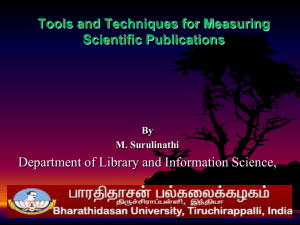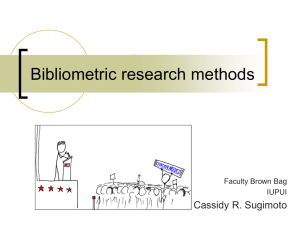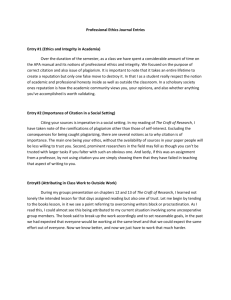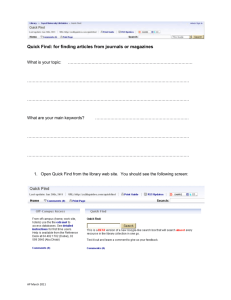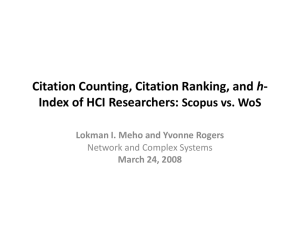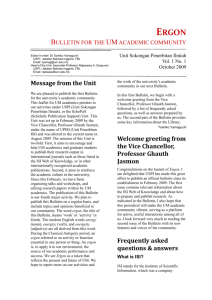product profile SCOPUS
advertisement
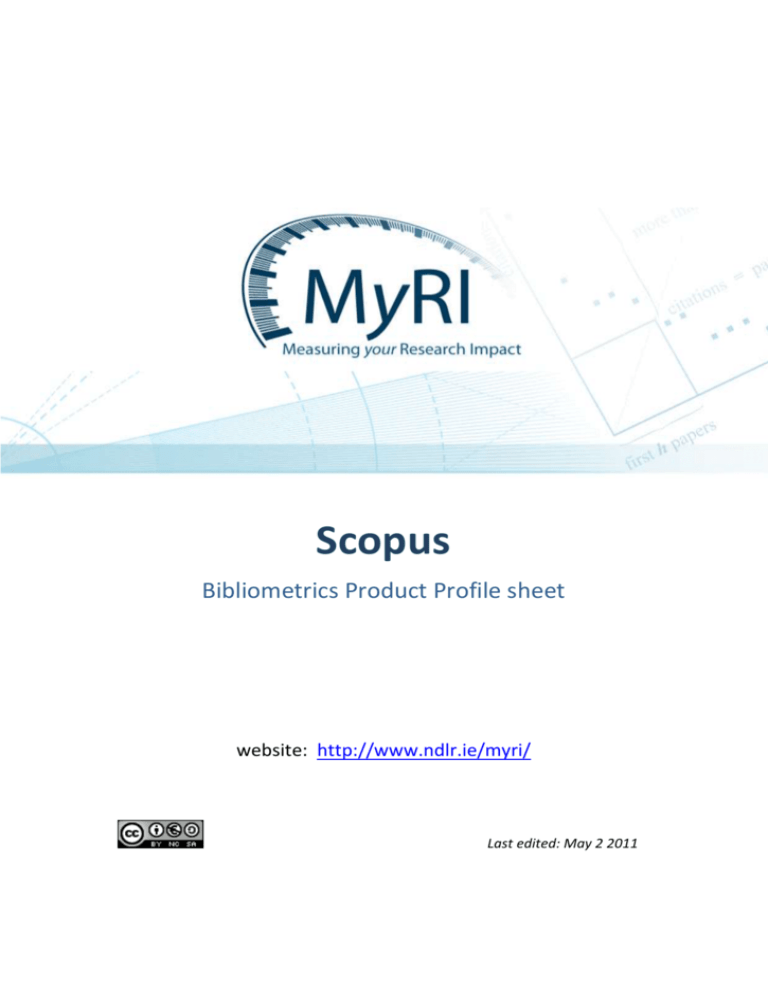
Scopus Bibliometrics Product Profile sheet website: http://www.ndlr.ie/myri/ Last edited: May 2 2011 1. Name of the product Scopus 2. Access Subscription-based service from Elsevier. 3. Web link http://www.info.sciverse.com/scopus/ 4. Related products The main subscription alternative is ISI Web of Science and Journal Citation Reports. Google Scholar with Publish or Perish software provides a free alternative to try out. SCImago Journal and Country Rankings is a free product that uses the same dataset from Elsevier, but applying a different PageRank type approach to metrics. 5. Main bibliometric and related uses The suite of citation analysis tools is available through their Research Performance Management (RPM) interface. a. Article Analysis and Impact i) Each document returned indicates the number of citations found in the database and these can be viewed in detail ii)The View Citation Overview option provides for analysis of individual articles or sets, presents analysis by year, and provides the h-index for the set b. Individual or Group Author analysis i) For any set of references for author(s) you can view the citing articles. ii) Use View Citation Overview for the main analysis of citation counts by year, and to view the h- index for the author or group c. Journal Analysis 1 i) Use the Analytics tab to avail of the Journal Analyzer tool for summary information. Drag and drop your chosen title to get analysis of the journal. This provides for each year: number of articles published; number of citations; number of articles not cited at all Two other journal rankings are provided, that are not in Journal Citation Reports: SJR which weights citations according to the prestige of their source journal. SNIP which corrects for differences in the frequency of citation across research fields and is therefore a normalised indicator that can be compared across research fields You can compare the performance of various journals within one graph/table to aid publication strategy ii) For detailed article analysis within a journal use the Sources tab. This provides the SJR and SNIP rankings for the entire journal which are alternatives to the ISI Journal Impact Factor. Move into Citation Overview to get citation counts, detailed citation information and the h-index for the whole set of journal title articles, year by year 6. The dataset The database, launched in 2004, is updated daily. Over 18,000 titles as of July 2010; 4,300 journals in Life Sciences, 6,800 in Health Sciences including 100% Medline coverage, 7,200 in Physical Sciences, 5,300 in Social Sciences and Humanities. A wider coverage in Social Sciences than the ISI dataset. Includes conference papers proceedings – 3.7 million papers as of July 2010. Better coverage beyond the USA than the ISI dataset - more than half of 2 Scopus content originates from Europe, Latin America and the Asia Pacific region and also better coverage of books and conference proceedings. Includes 1200 Open Access journals. 7. Other notable features Unlike ISI, excludes self citations – and excludes these for all co-authors not just the first author of the paper. Author Search and Affiliation Search with the Scopus affiliation ID is an attempt to address problems of lack of standard forms of these in a better way than ISI. Various visualisations of citation analysis are offered. Live Chat support is offered. 8. Issues Citation trail only goes back to 199. All calculations are only based on that set of citations - 1996 to date- both for citing journals and for the cited materials too, so the h-index is only calculated on citations to work published since 1996. 9. Further information Scopus provide a good guide to this product at http://www.info.sciverse.com/documents/files/scopustraining/resourcelibrary/pdf/WPRPM_EN_0707_LO.pdf http://info.scopus.com/scopus-in-detail/tools/ 3


